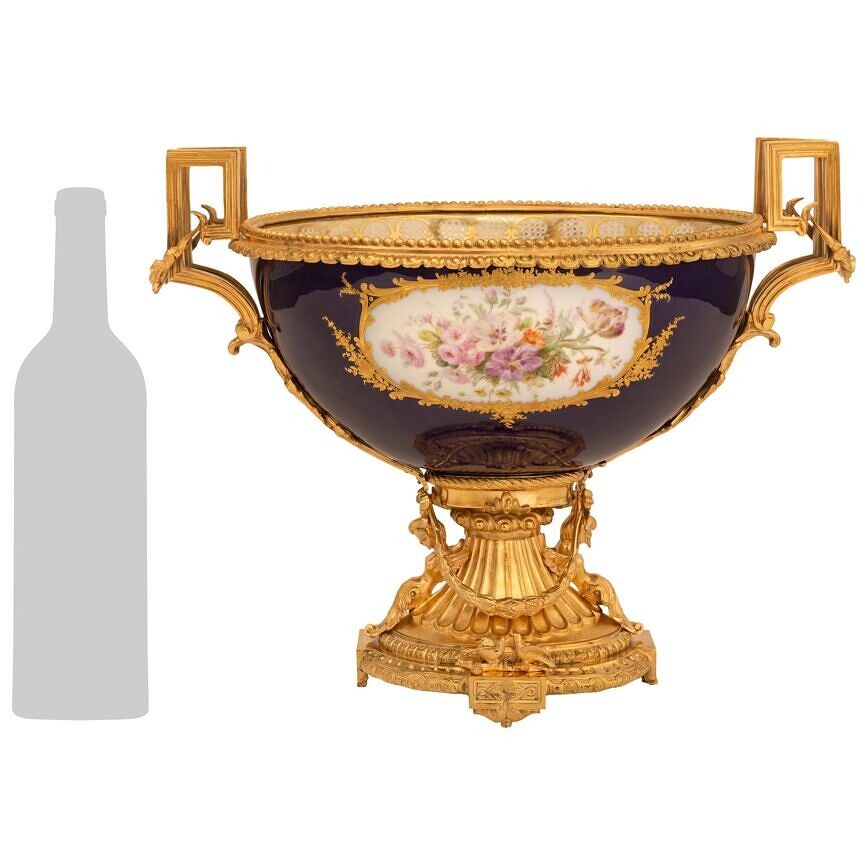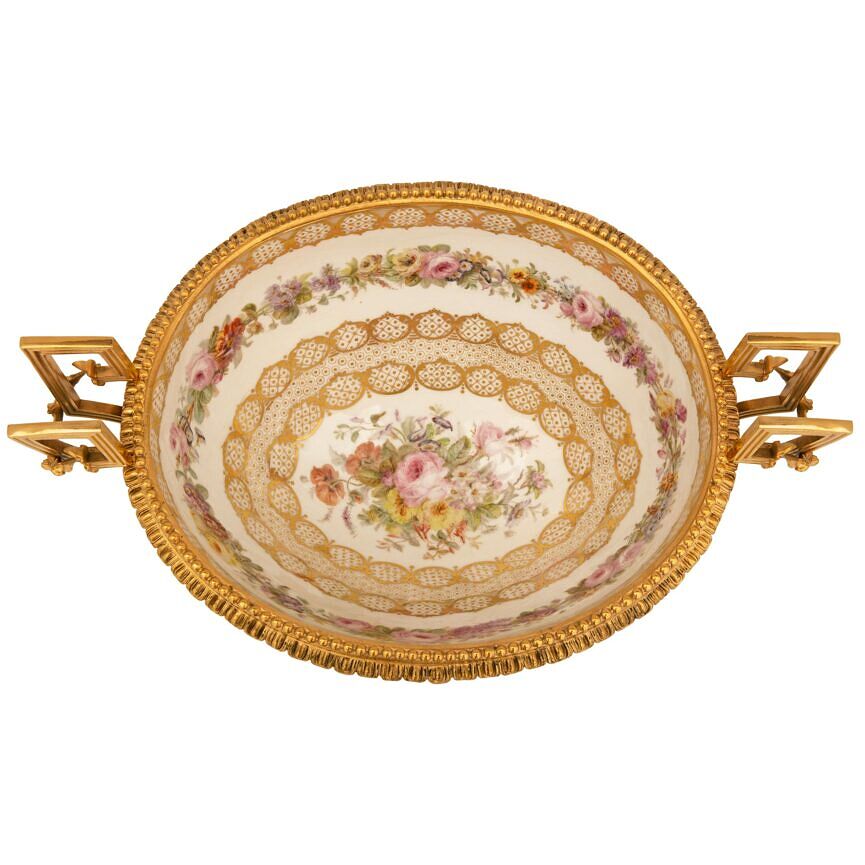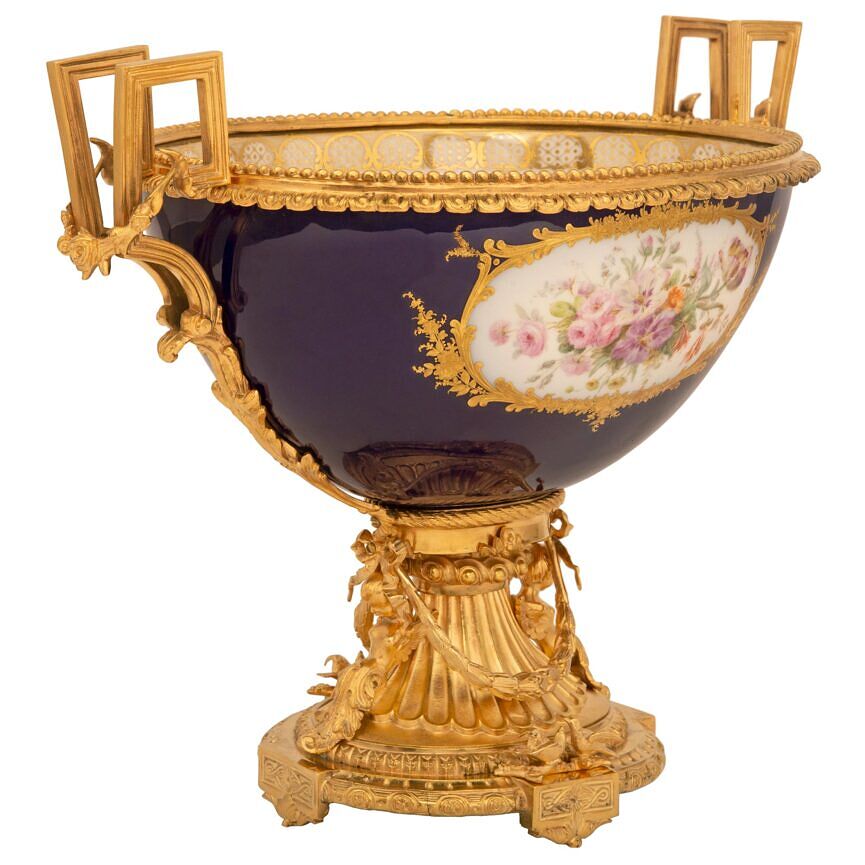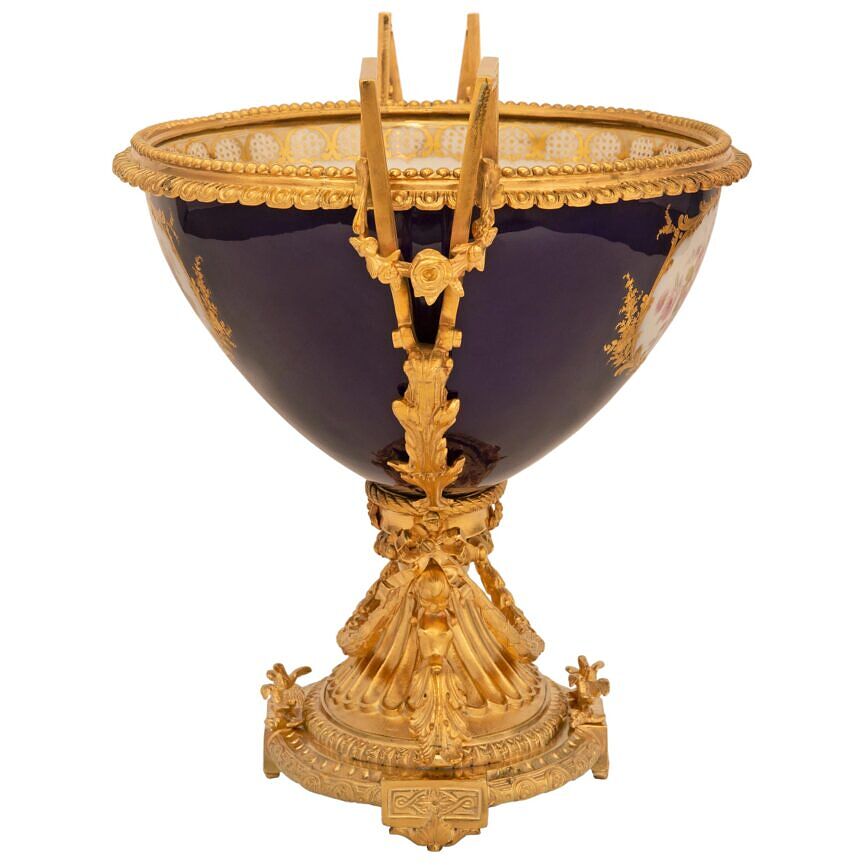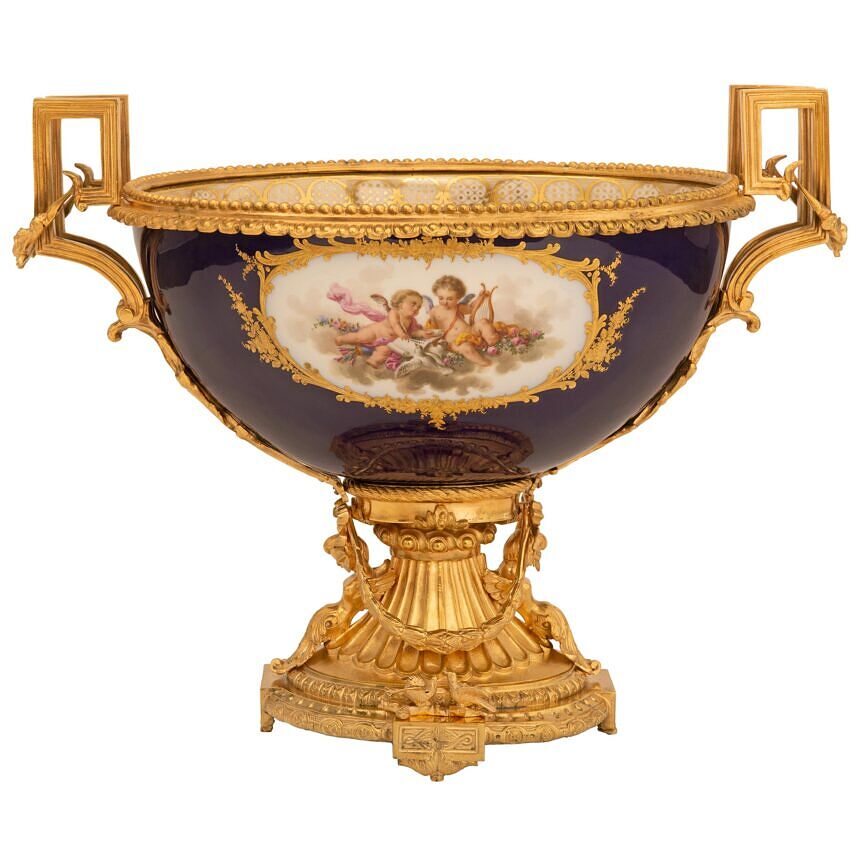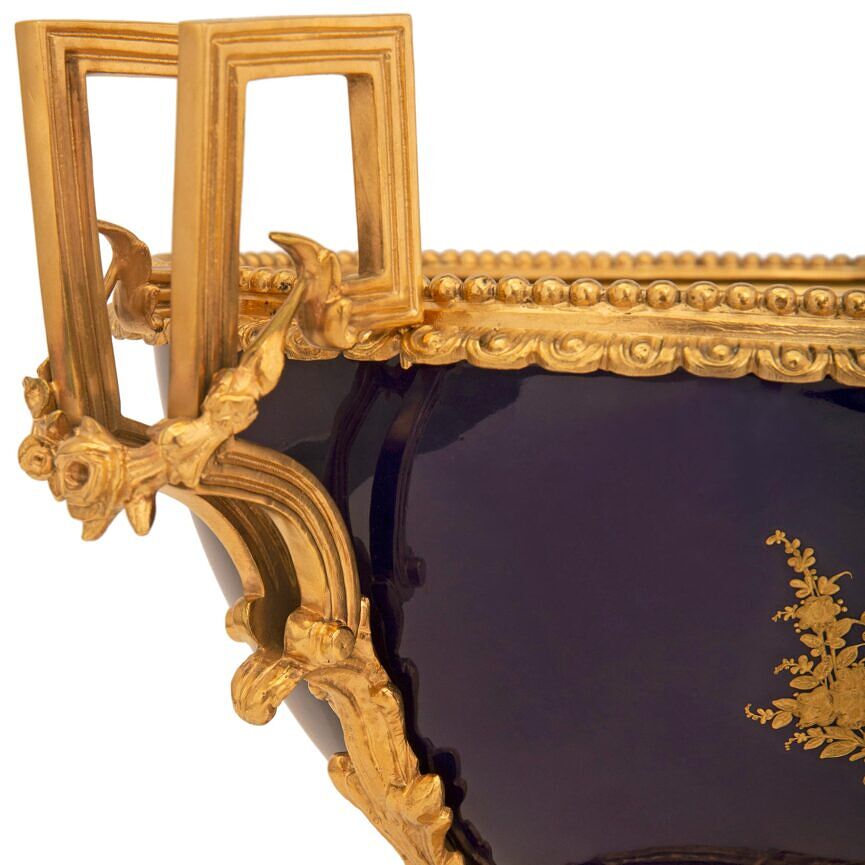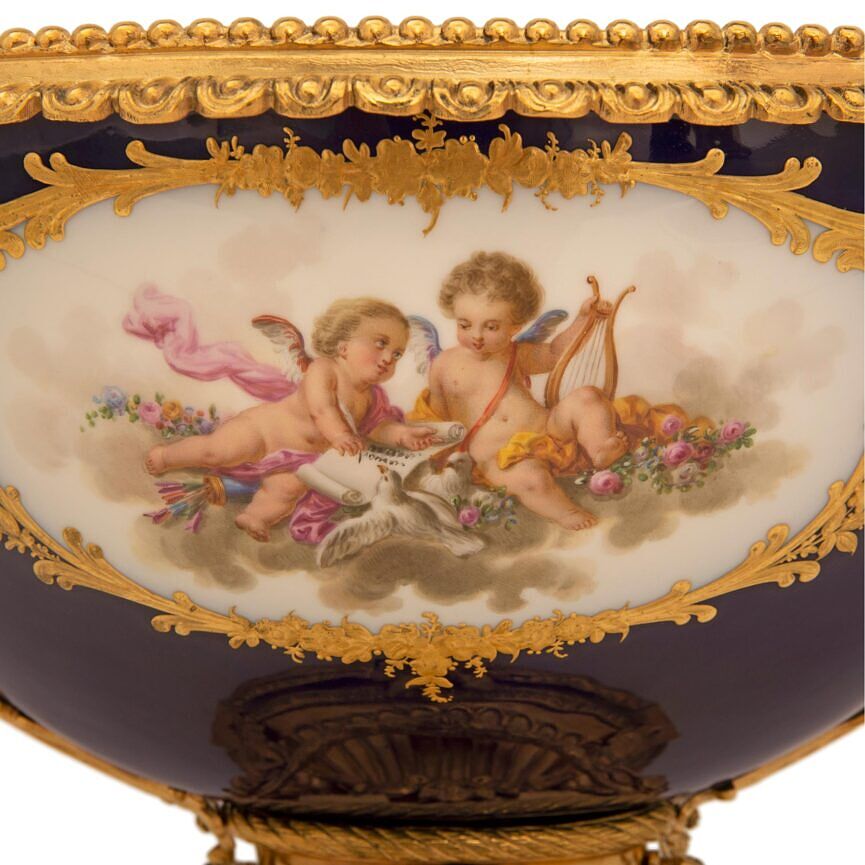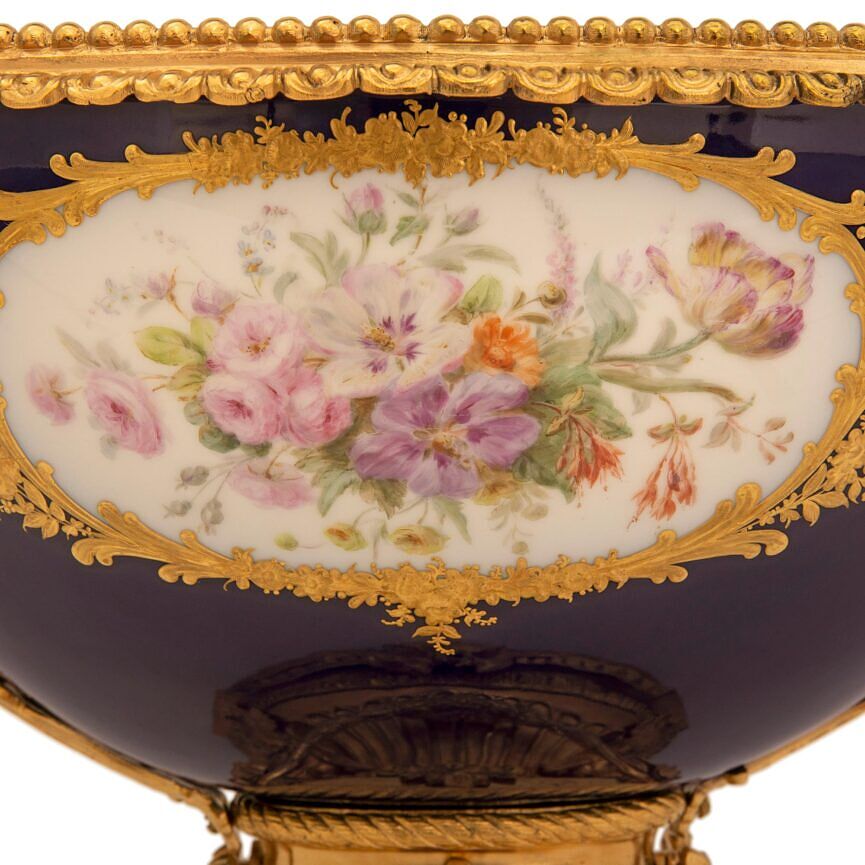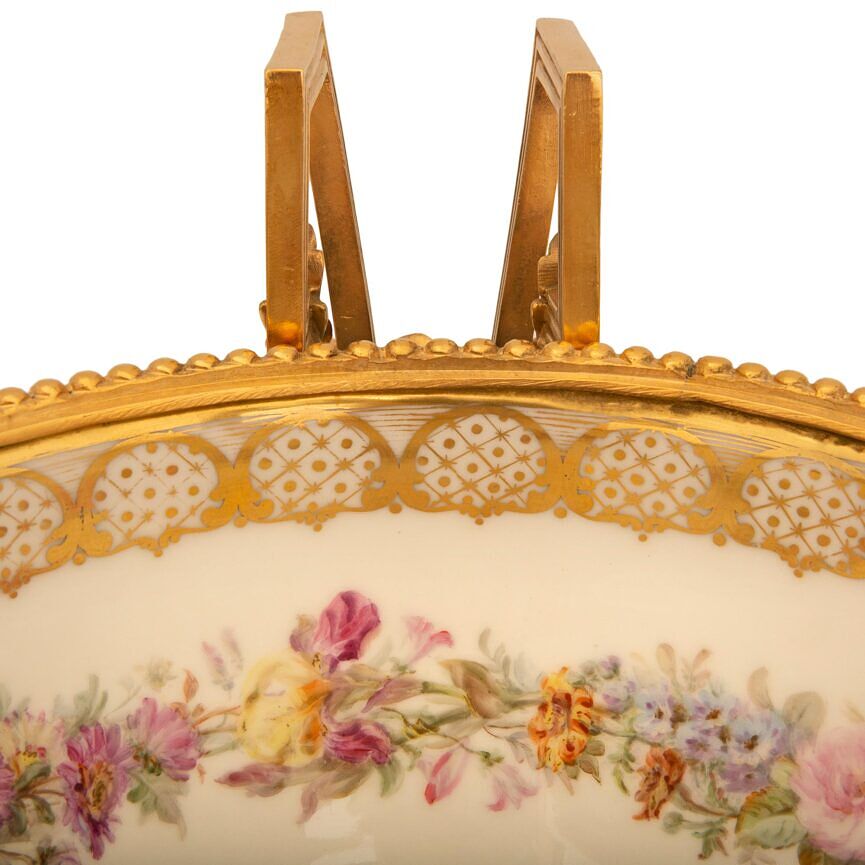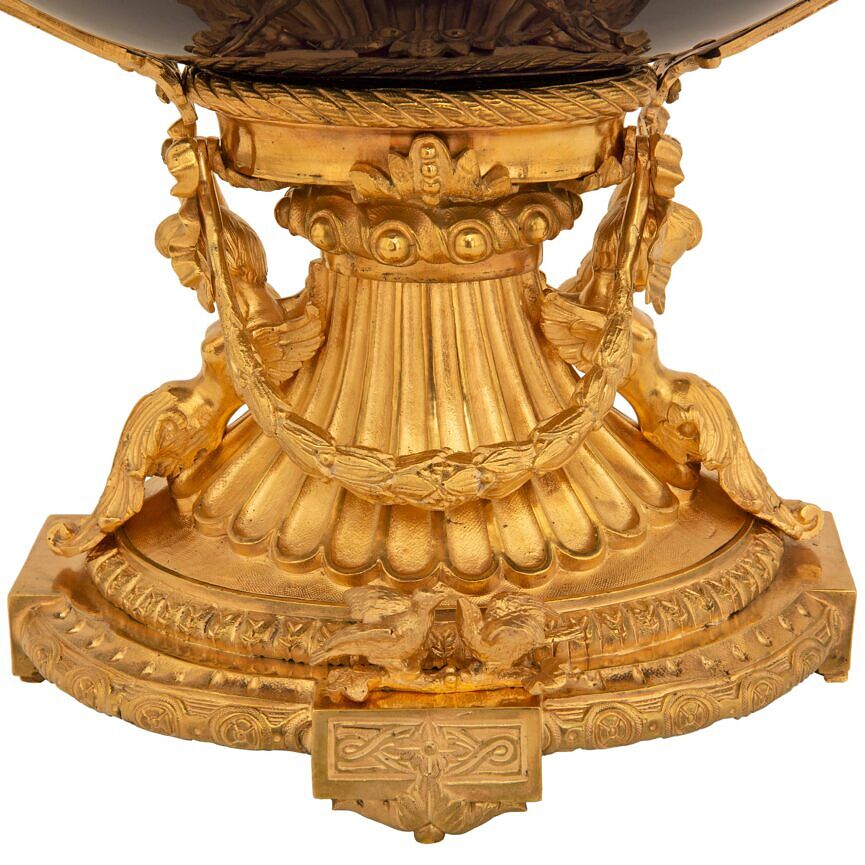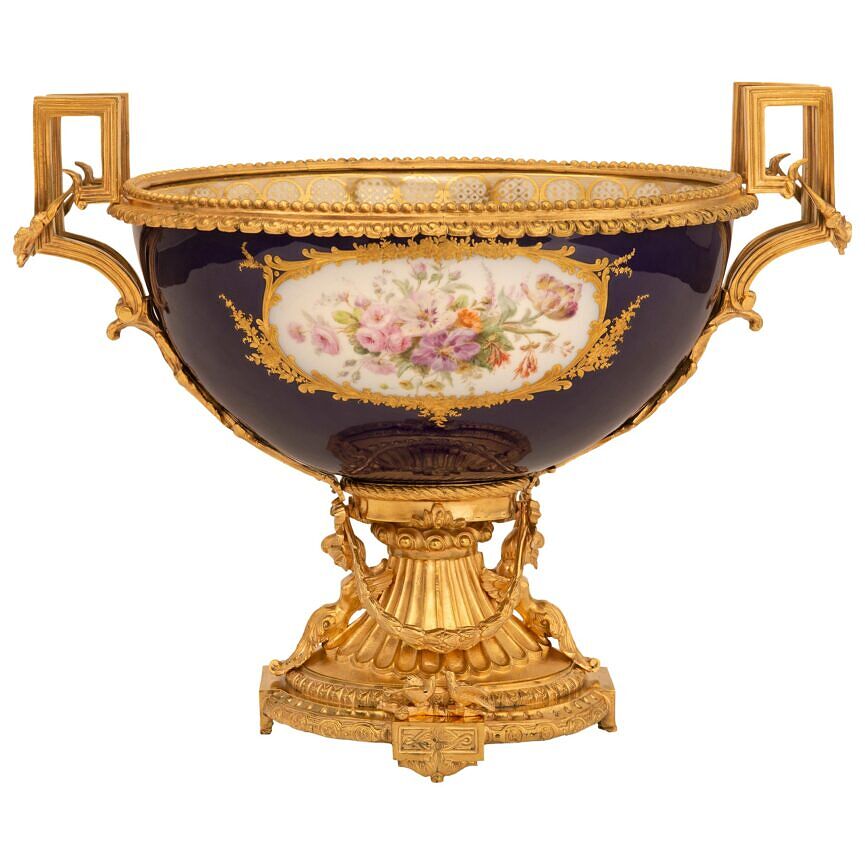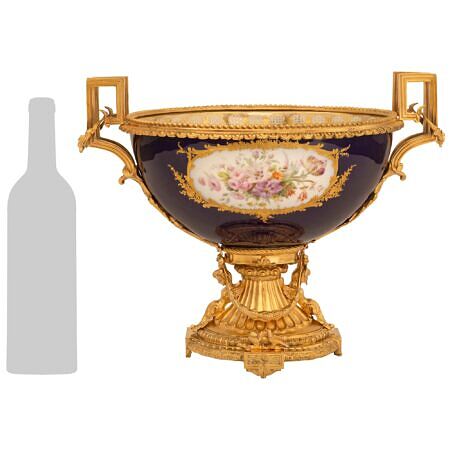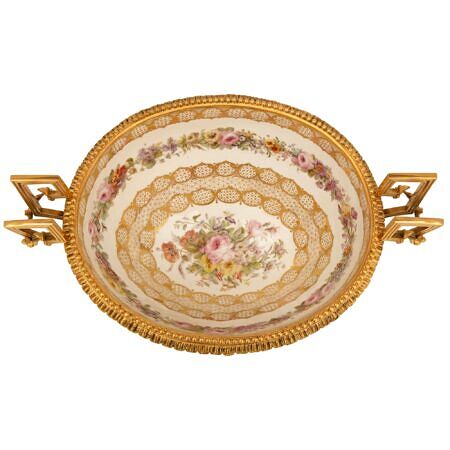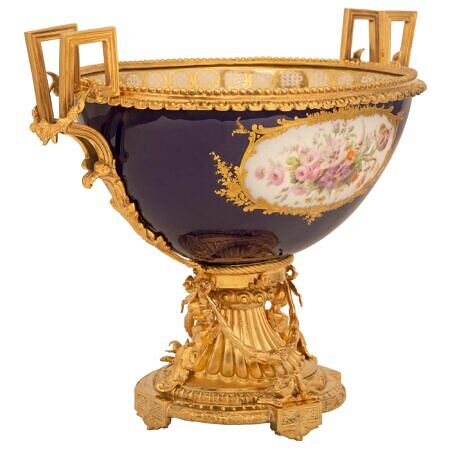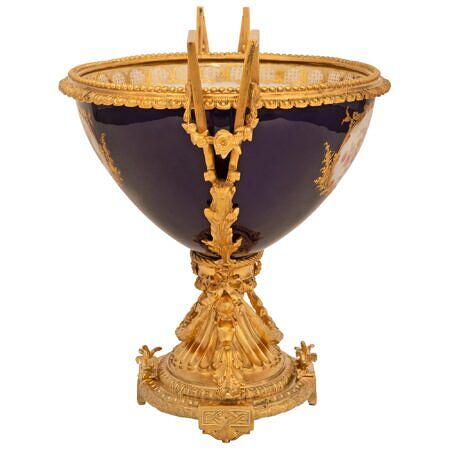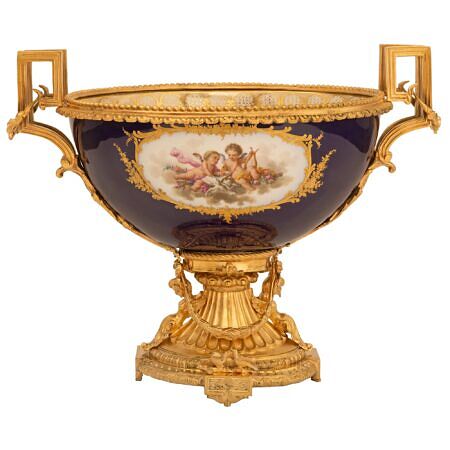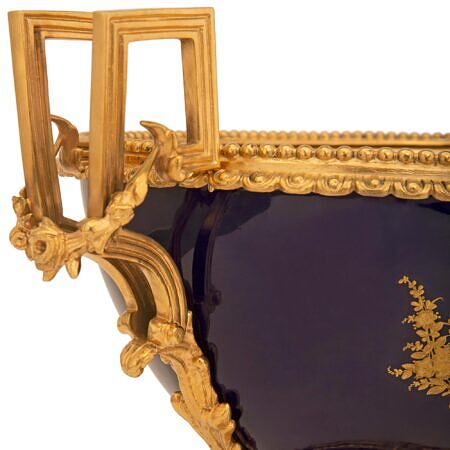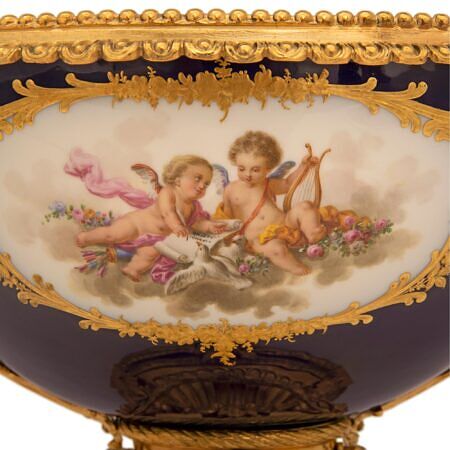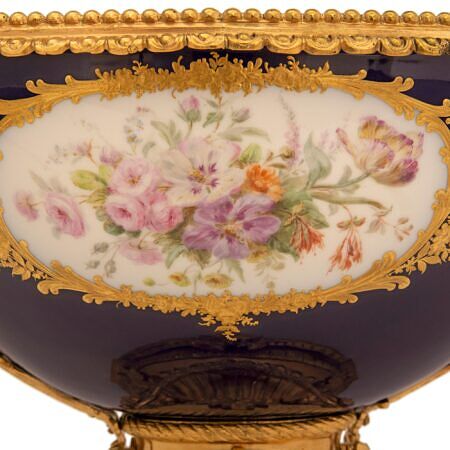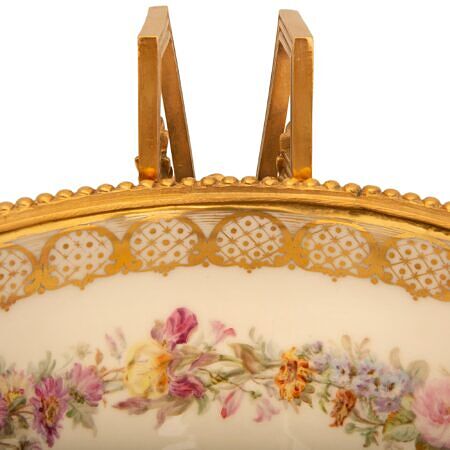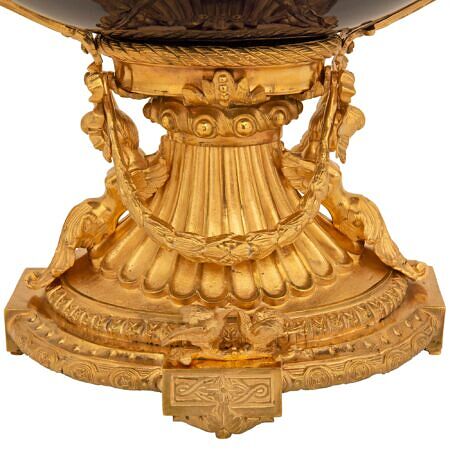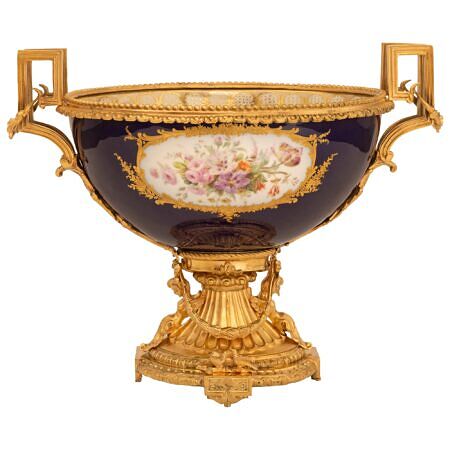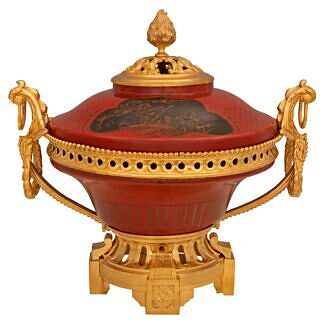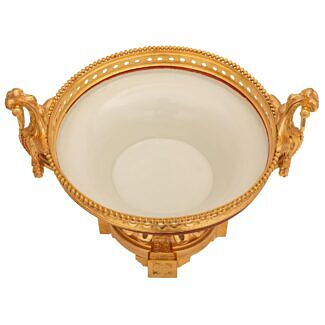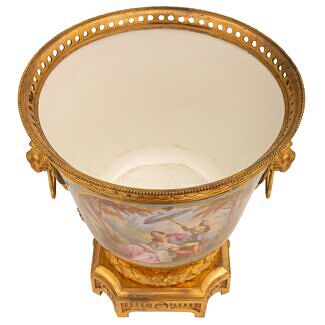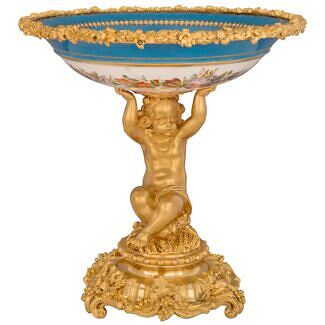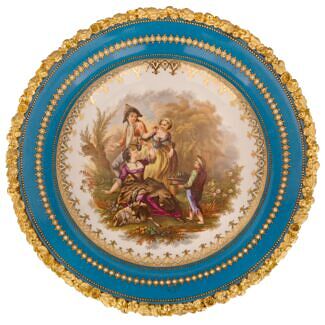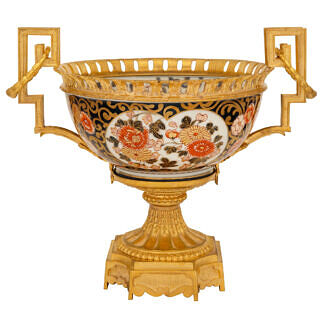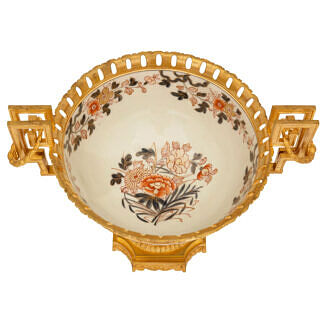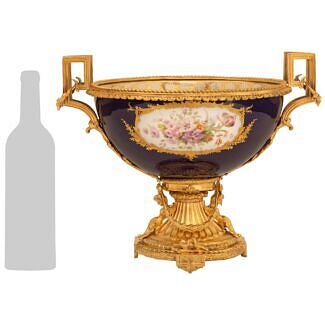A French 19th century Louis XVI st. ormolu and Sèvres porcelain centerpiece
List: $13,800.00
A stunning and very high quality French 19th century Louis XVI st. ormolu and Sèvres porcelain centerpiece. The centerpiece is raised by an elegant ormolu base with fine foliate feet, beautiful richly chased frolicking lovebirds and a striking fluted socle... — Read More
A stunning and very high quality French 19th century Louis XVI st. ormolu and Sèvres porcelain centerpiece. The centerpiece is raised by an elegant ormolu base with fine foliate feet, beautiful richly chased frolicking lovebirds and a striking fluted socle shaped pedestal support adorned with superb swaging berried laurel garlands tied with ribbons and flanked by charming winged cherubs amidst scrolled acanthus leaves. The exceptional oblong shaped cobalt blue Sèvres porcelain bowl displays wonderfully executed colorful hand painted blooming flowers on one side and lovely winged cherubs with a lyre, a scroll, and love birds at the other side each framed within gilt foliate bands with intricately detailed floral designs. Beautiful scrolled foliate ormolu handles lead up each side to Greek key designs draped in a swaging blooming flower garland and flanking the beaded and reeded rim centering the finished interior decorated with remarkable gilt lattice designs and superb colorful hand painted flowers. — Read Less
- Item # 13263
-
H: 14.5 in L: 18.25 in D: 12.25 in
H: 37 cm L: 46 cm D: 31 cm
- France
- 19th Century
- Ormolu, Sèvres Porcelain
- Louis XVI st. Read More
- Sèvres Read More
It was founded through the support of King Louis XV of France and at the initiative of Madame Pompadour to be located near her Château.
Due to Sèvres’ reputation for excellence and prestige, it has always attracted some of the best artists throughout history; François Boucher, Albert-Ernest Carrier-Belleuse, Étienne Maurice Falconet, Alexandre Fragonard and August Rodin, just to name a few. Many of these artworks can be seen at the Louvre Museum and the Musée National de Céramique in France.
Initially, Sèvres created a soft paste porcelain know as Biscuit de Sèvres. In 1768 the Bordeaux chemist Villaris and Jean Baptiste Darnet discovered deposits of Kaolin on French soil. In 1771 the Royal Academy sent a report on the creation of hard paste porcelain at which time Sèvres began manufacturing hard paste porcelain.
Louis-Simon Boizot (1743–1809) was a French sculptor renowned for creating Biscuit de Sèvres models, and was the director at Sèvres from 1774-1800, followed by Alexandre Brogniart(1800-1847) and Henri Victor Regnault in 1854.
Related products
-
# 12164 - H: 12" L: 13" D: 10"
-
# 3332 - H: 10" L: 10" D: 9"
-
# 11606 - H: 12" L: 11" D: 11"
-
# 7489 - H: 14" L: 17" D: 12"


